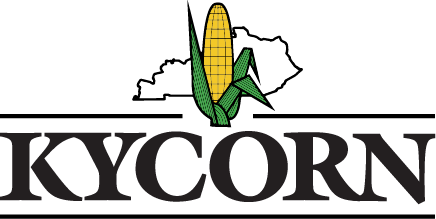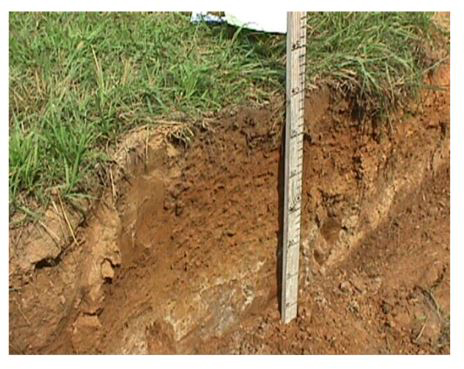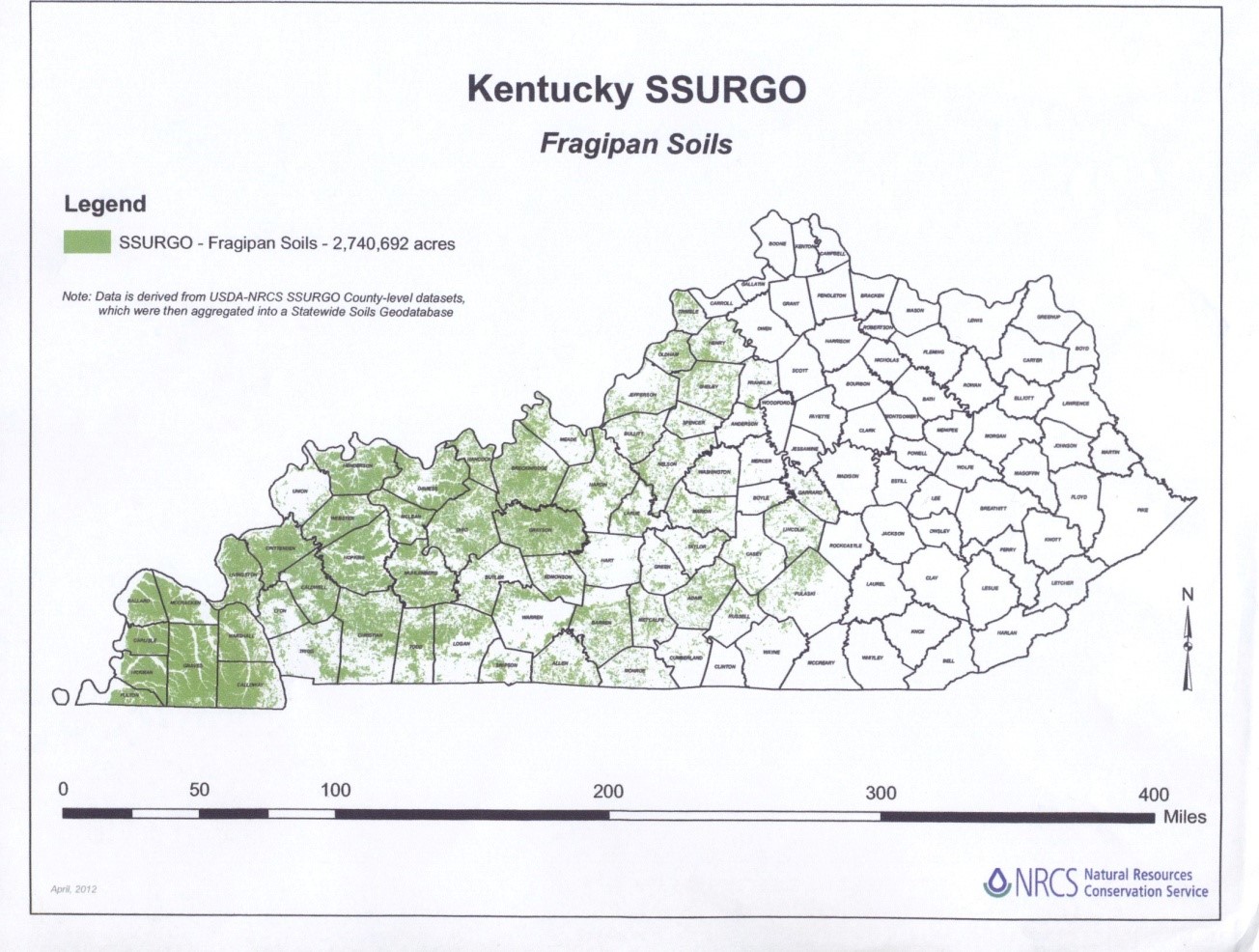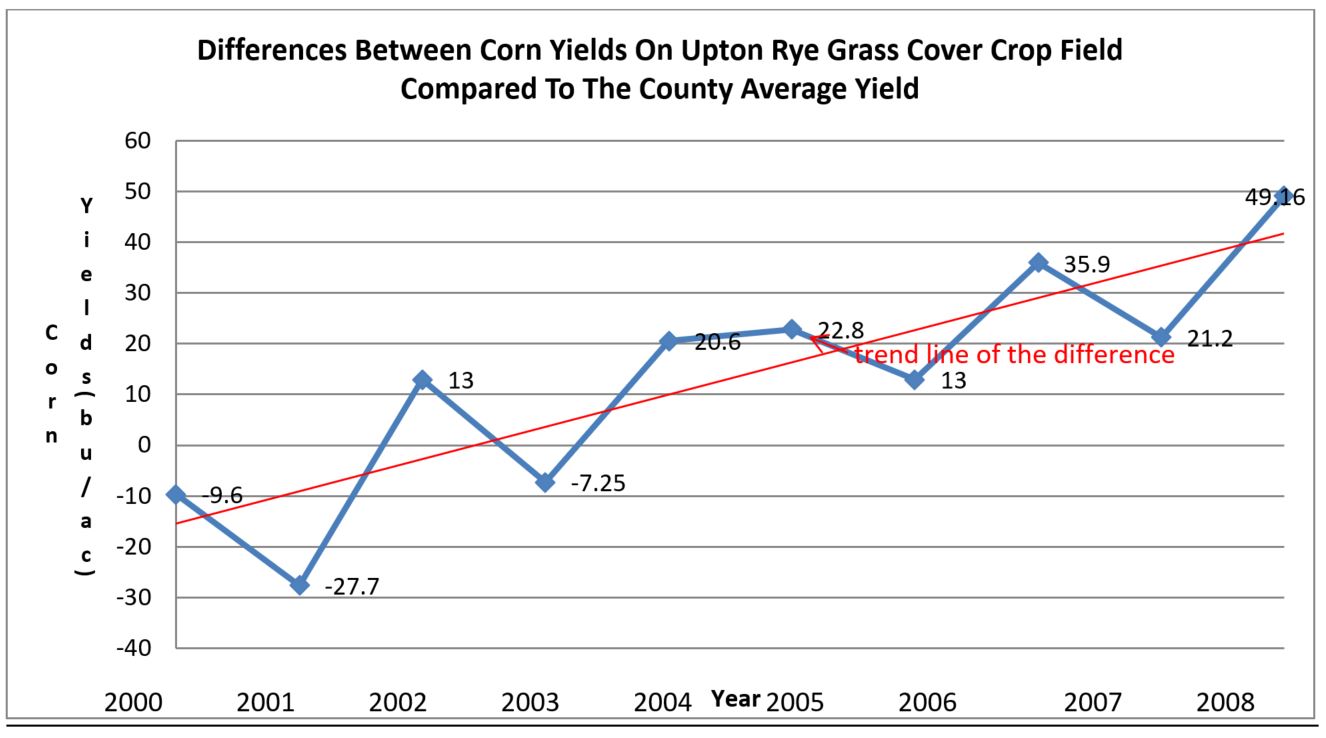By Lloyd Murdock, University of Kentucky
Full Report (PDF)
This research has been funded by the KyCorn since 2012.
The fragipan is a naturally occurring soil horizon that virtually stops water movement and root growth through the soil. Its depth averages about 20-24 inches in the soil types in which it occurs. The layer is due to the cementation of the soil particles with a silicate rich amorphous aluminosilicate binding agent. The fragipan is present in about 2.7 million acres of Kentucky soils and about 50 million acres in the U.S. Fragipan soils reduce yields of crops for 2 reasons: 1) limited water holding capacity due to limited soil depth 2) water saturated soil conditions during wet periods.
The fragipan itself is a silt loam soil that has been cemented. If the cementation is dissolved it would be very similar to the soil above it. The goal of this project is to try to dissolve the cementation and make a deeper soil that will hold more water for summer growing crops and reduce waterlogging in the winter which would make the soil better suited for winter crops and better support trafficking at this time of the year.
The approach to investigation of a remedy to the fragipan has three phases:
- Laboratory research and evaluation
- Greenhouse research and evaluation
- Field research and evaluation
The research on the fragipan by the research team is proceeding faster than originally expected. Of the many plants, compounds and combinations tested, there is one plant, potentially four compounds and possibly other materials that have been found to be effective in breaking apart the fragipan. They are annual ryegrass, potassium chloride, potassium sulfate, sodium fluoride, sodium nitrate and possibly leonardite humate. Previous research in Illinois offers additional support for the effectiveness of ryegrass.
Annual ryegrass has been chosen as the central focus of the greenhouse and field research due its notable advantages. Annual ryegrass roots apparently contain exudates that have a degrading effect on the fragipan. The deep root penetration also increases soil porosity and may facilitate the leaching of the four or five other effective compounds down to the fragipan. We are presently looking for varieties of annual ryegrass that are more effective in breaking down the fragipan and varieties that are more easily killed by glyphosate.
Through research findings in the laboratory, greenhouse and the field, we have gained enough confidence in the ryegrass treatment as a fragipan remedy and its yield increase potential, that we have begun cooperating with a few farmers across the state to establish on-farm trials. We have also found two fields in Kentucky that had a history of five years of annual ryegrass over a 10-year period which appears to have disintegrated the top five inches of the fragipan.
In addition to the four compounds that have shown promise in reducing the fragipan strength, we are continuing to experiment with other materials and additives that can accelerate the breakdown of the fragipan. The ones showing possible promise now are humates. They will be researched in combination with a ryegrass cover crop in the greenhouse and the field but at this time the results are mixed. We are continuing to look and have identified other plants that we hope will have this capability. They will be tested soon.
We are also finding lower bulk density and increased porosity as well as an enrichment in some organic compounds in the fragipan horizons undergoing degradation in the greenhouse where ryegrass is present when compared to the control. We are also finding compounds which we suspect that are compounds which are exudates released from the ryegrass roots which induce the fragipan degradation. If the exudates can be scientifically verified and identified, it will greatly aid in this effort and may lead us to a quicker and more effective method to remediate the fragipan.
The average yield increase of corn and soybeans over a three-year field research period for an annual ryegrass cover crop compared to no cover crop is an average of 9.8% per year on a fragipan soil at Princeton, Kentucky. The scientific evidence indicates that fragipan breakdown increases with time and the continued use of annual ryegrass as a cover crop. Therefore the yields should continue to increase with time.
The average yearly increase of corn grown after an annual ryegrass cover crop on a fragipan soil in southern Illinois is 3.7 bushels per acre per year over a 15-year period compared to the average corn yields for that county. This is not a scientific trial but indirect evidence on what might happen with time. The increase is accumulative resulting in an increase of 55 bushels per acre the 15th year. This results in an increased return of $1,228/ac over those 15 years for using annual ryegrass as a cover crop. This is calculated using $4/Bu for corn and an expense of $36.50/ac for planting and killing the cover crop. For 1,000 acres the increased return would be $1,228,000 over those 15 years.
With these limited results, it appears that it might be possible to increase yields of corn and soybeans by 25% on the fragipan soils by using an annual ryegrass cover crop. We also expect to improve the yields of wheat. A 25% increase would result in $500,000,000 in increased returns to Kentucky producers per year or $5,000,000,000 over a 10-year period on the 1.5 million acres of cropable fragipan soils in Kentucky. There are 2.7 million acres of total fragipan soils in Kentucky.




